Summary
Students spent the morning watching a LC-130H land on the skiway and then visited the backlit snow pit where IGERT student Kaitlin Keegan showed the students how the layers tell the story of the climate for the last two years.
In the afternoon students rotated through three different stations: taking density measurements at the snow pit with Kaitlin, working with Brant Miller at the Mobile Science Facility (MSF) to develop questions unique to Summit and conducting experiments to answer them, and using a "ramsonde" to determine skiway snowpack via a Tucker ride to the end of the runway with Bob, Summit Field Coordinator.
Pictures
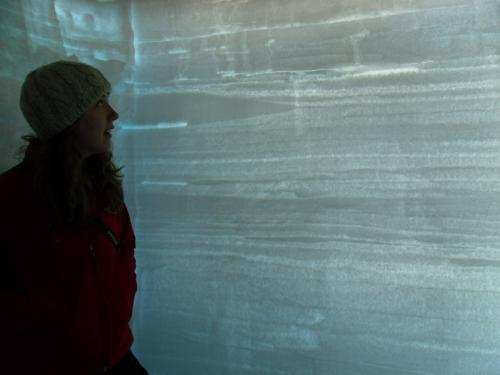
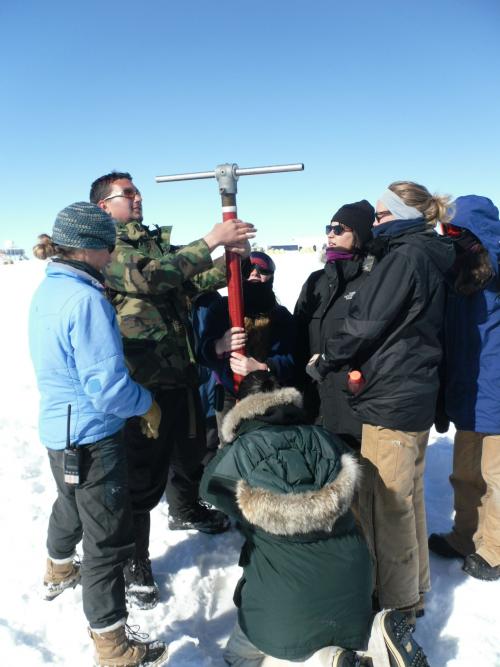
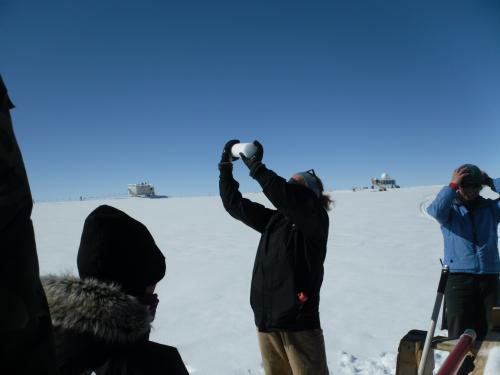
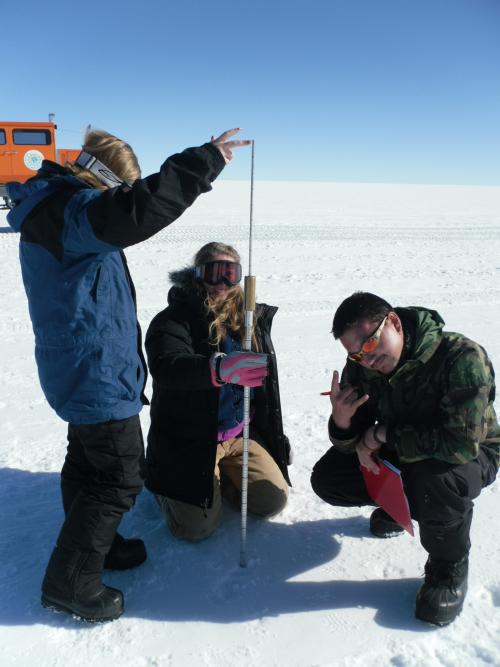
Student Blogs
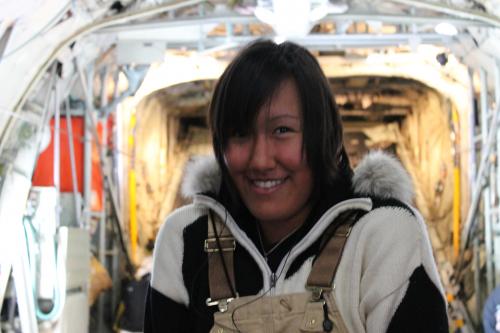
Hello, my name is Cecilia, I am 16 years old and I go to high school in Sisimiut HTX. So, today was a really good day, in my opinion: The best day. We are at Summit, which is on the top of the ice sheet. We started with were we went down to see the airplane land. After that, we took a small ride on the snowmobile over to the snow pit. The snow pit is a wall of snow from the last couple years, which is called fern (over a year old snow). It was really interesting, because you could also see the melt water, storm, winter and like that. We went down to the snow pit in groups, but not in our groups (f.x. I am in the "Kanger" group). While some of us were waiting for others who are down in the snow pit with Kaitlin, we drilled a hole where we can see the layers, like in the snow pit, just in a smaller version. Meanwhile, another airplane were about to land, so for those who wanted to, took over to see the airplanes in the ski way (fact: the ski way is 3 miles long). After we ate lunch, we got into our groups and took to 3 different places. My group took first to the MSF, were we measured temperatures of clouds and ground. We made our own questions were we were going to answer it with a help from the instruments we learned about yesterday. And we also had to answer some questions from the students from Idaho. The second place we went to, is the tucker with Bob. Bob is a field coordinator, so he do almost everything in the Summit camp. He took us to the ski way, made us measure the ice, and to the end of the ski way were we took some pictures and made snow angels. After the tucker we took back to the camp, and Andy was waiting for us in the snowmobile. He gave us a ride to the snow pit again. In the snow pit, we took measurements of the wall/fern, were we took a little sample from a certain high, and took a sample from every single 3 cm and then we measured the weight so we could find out about the density. Those we took as samples were pretty small squares. So we tried to eat is. So we can officially say that we have eaten a fern who is about 2 years old. When we were in the snow pit, our two teachers were waiting outside with Andy. When we got out, they went down to see what we have been doing. Meanwhile, group Kanger (me, Nivi and Charlotte) asked nicely Andy if he could give us a ride in the snowmobile, were we pretend that we were tourists. It was really funny, because Andy stopped at some weird places and said that he didn't knew about it and why it were there. All we did, were we laughed and took pictures of the things he introduced us to. When we got back to the big house, Andy showed us the fridge, and it was awesome. After dinner, Louisa Kramer made a presentation about what she do, and what she's doing in Summit. So I must say, it was a really good day.


Comments